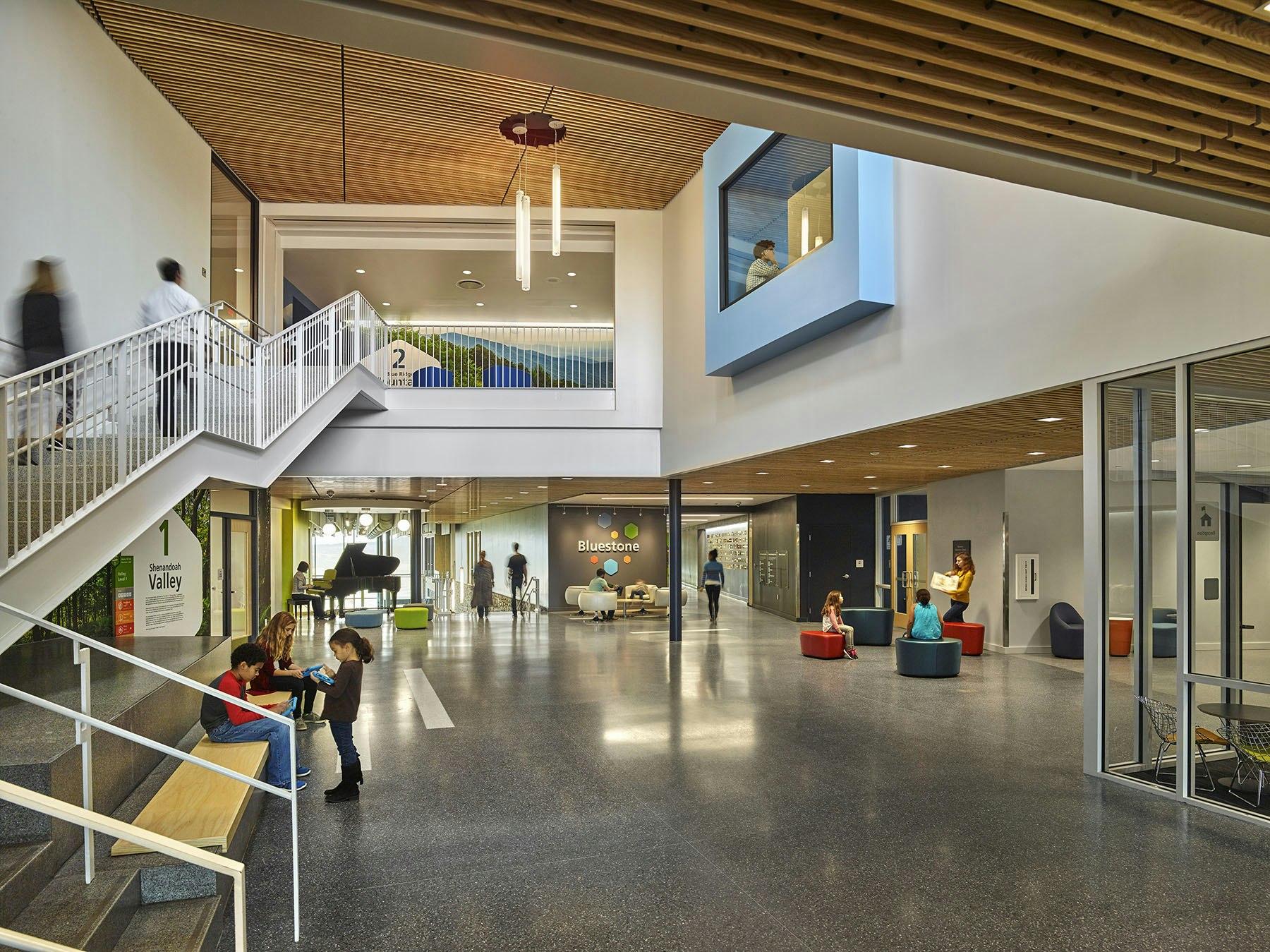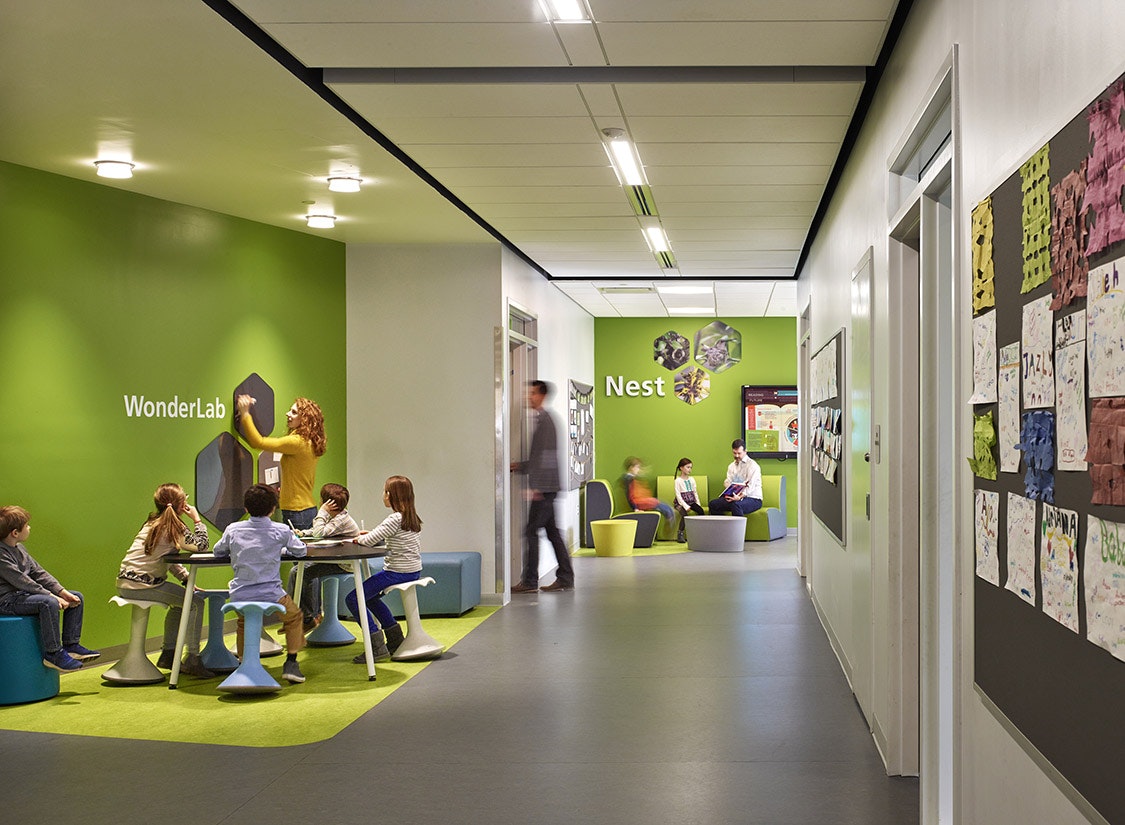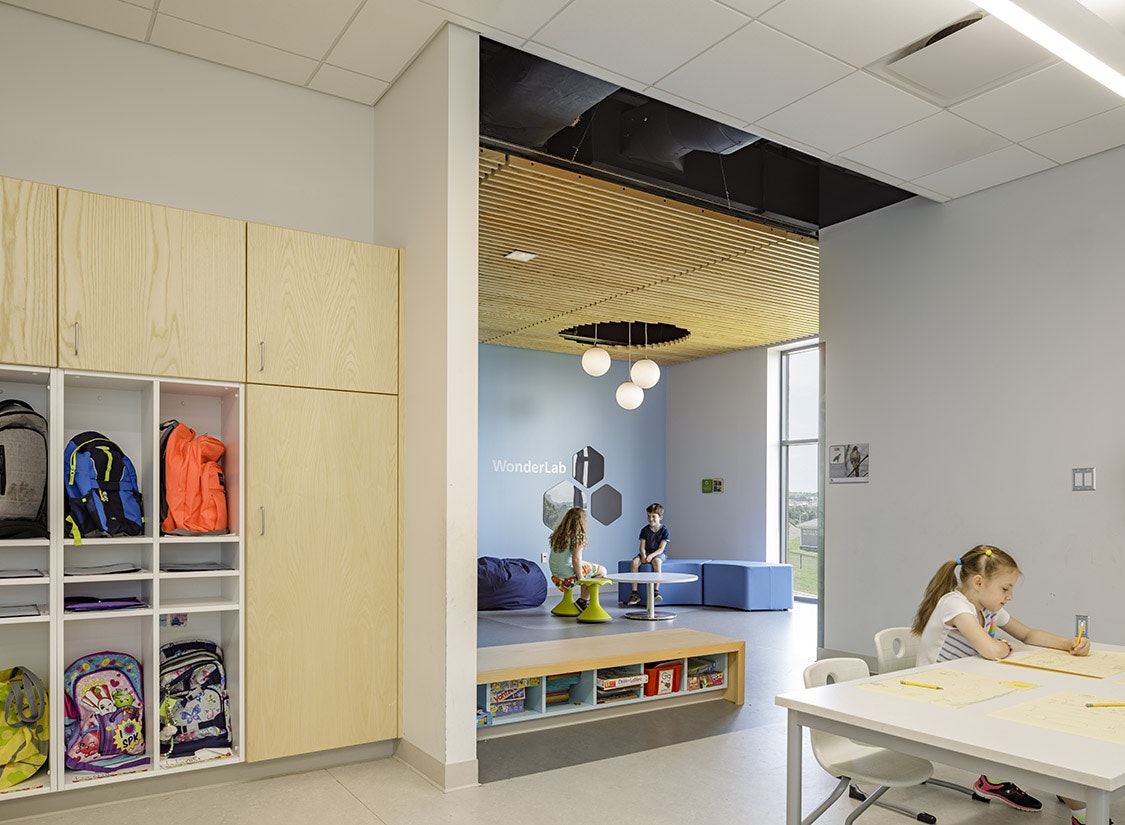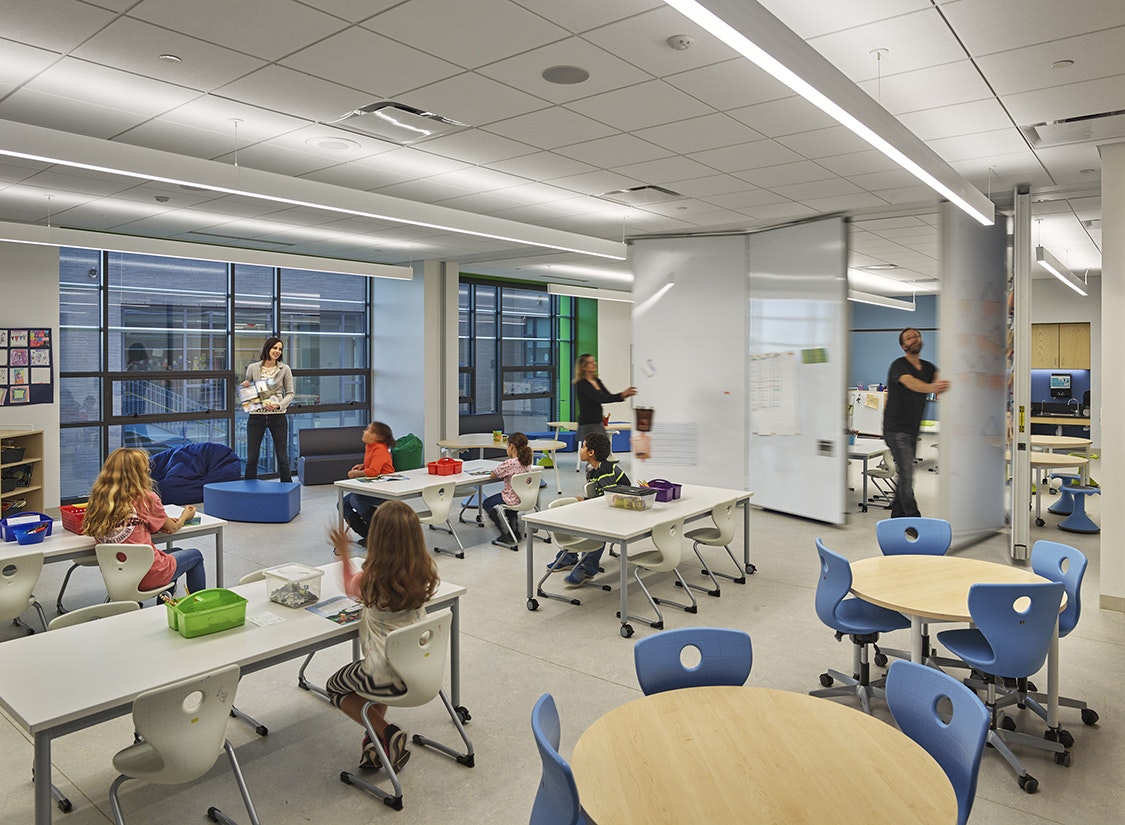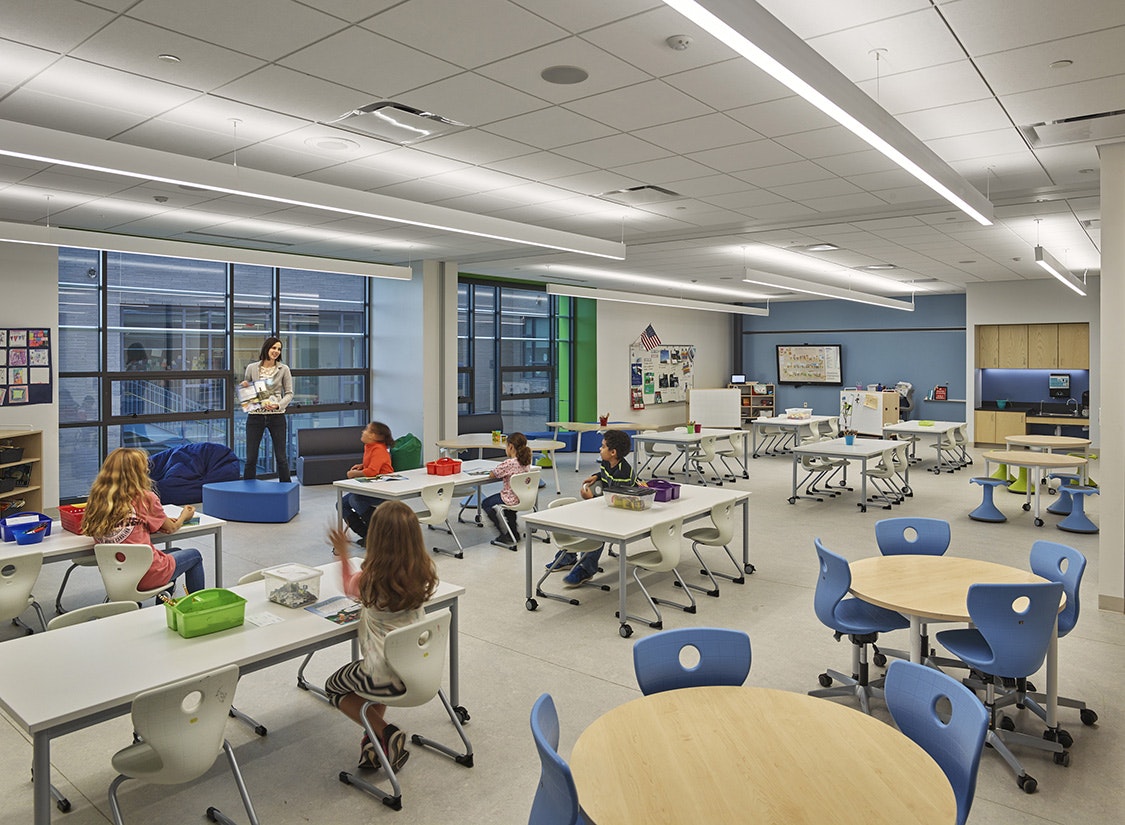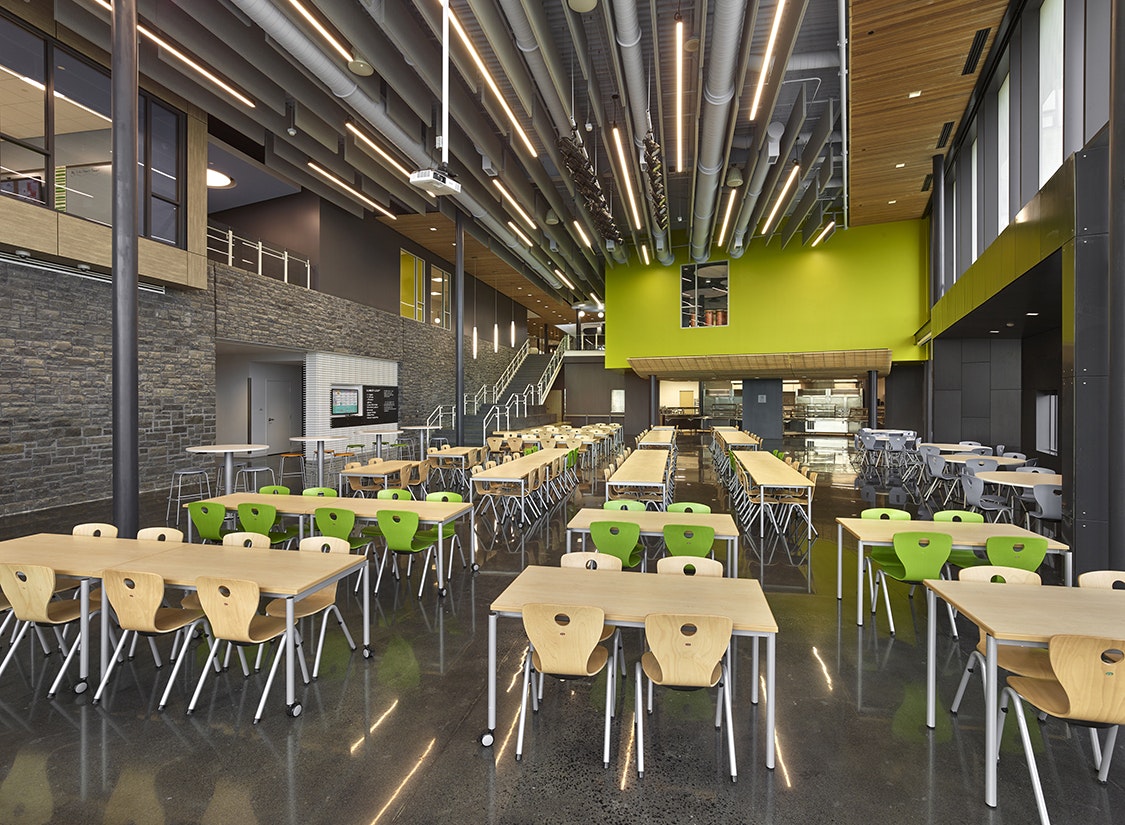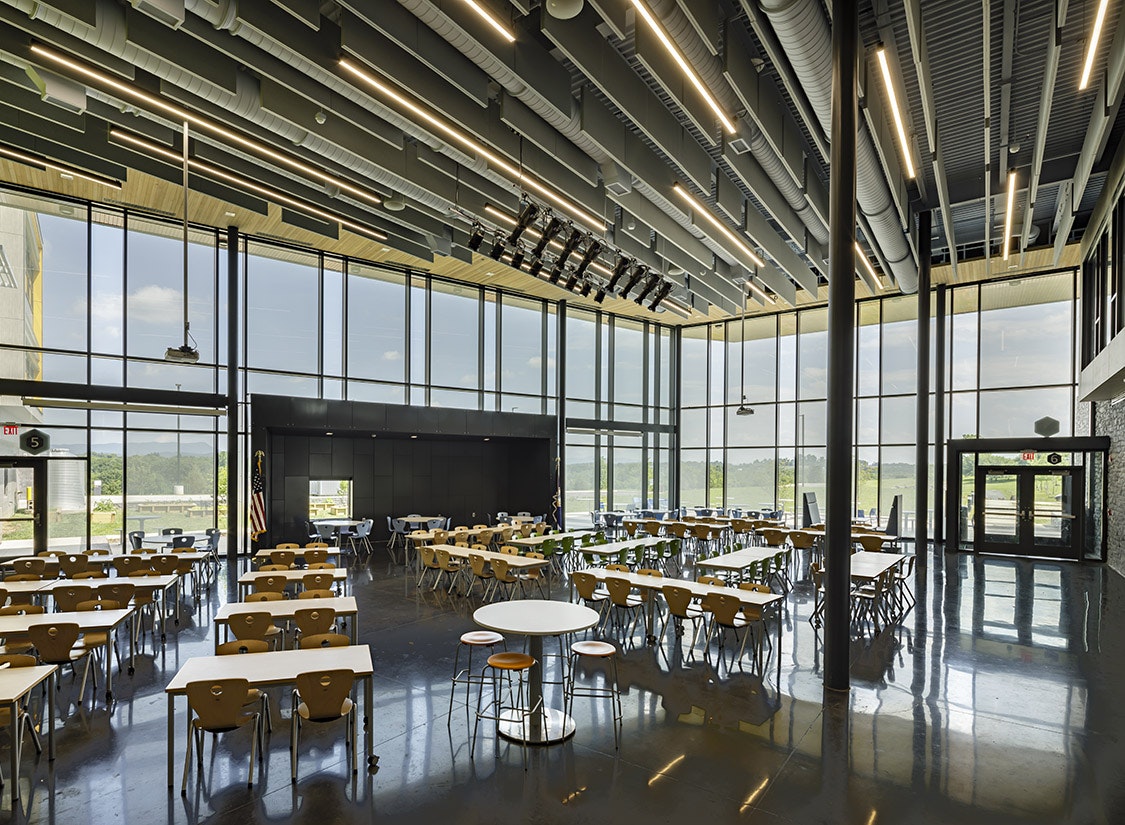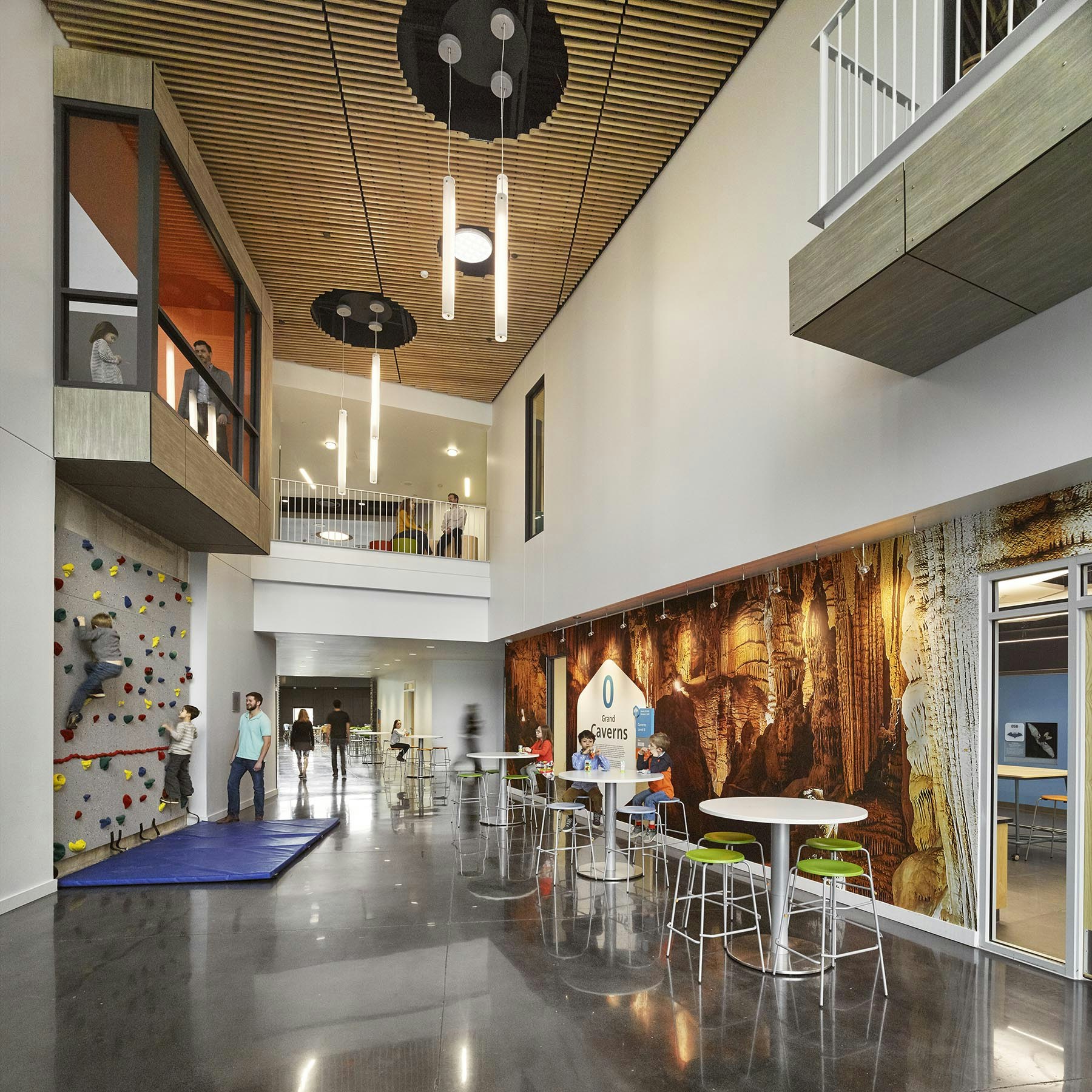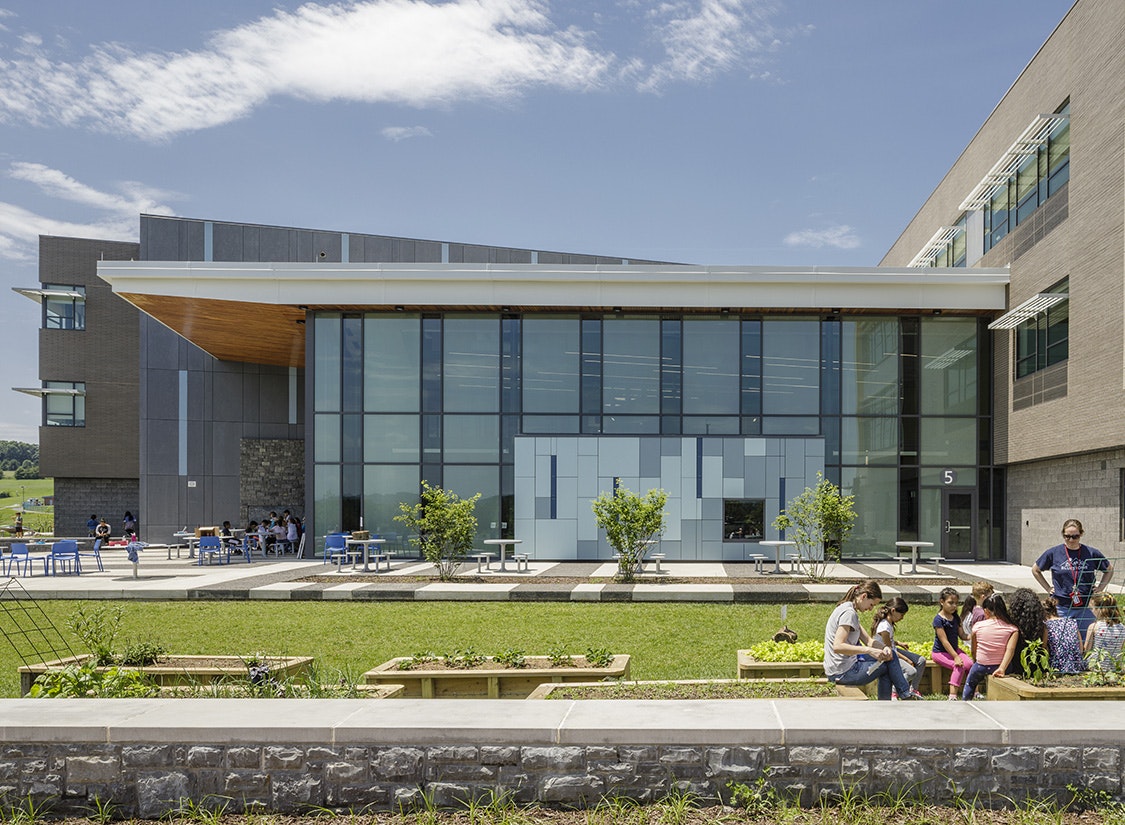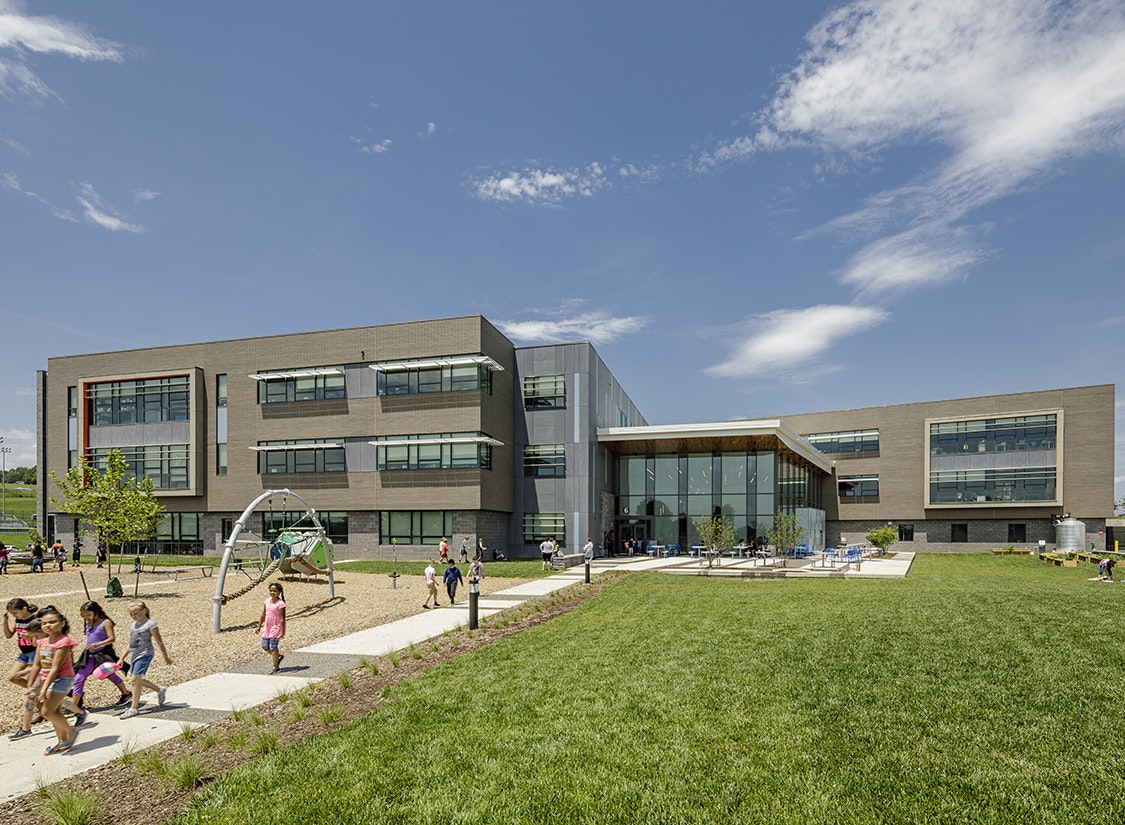Nicknamed "the friendly city," Harrisonburg is a designated refugee relocation city. Harrisonburg City Public Schools (HCPS) has experienced the highest school enrollment growth rate in Virginia over the past 7 years. Between 2002 to 2013, school enrollment grew more than 32% with an overall gain in city population of 21%. 35% of HCPS students identify as English Language Learners, representing over 60 different countries and speaking 58 languages. This diversity offers both cultural opportunities for learning as well as challenges in terms of ensuring appropriate levels of support are championed for this unique and growing population.
"Learning neighborhoods” support differentiated opportunities for collaboration in core learning spaces, circulation areas, teacher resource rooms, and "maker" hubs that can be rearranged to support desired levels of autonomy and collaboration. The design embraces cultural diversity while highlighting the relationship between the school and its global context. These social and physical elements help students relate to the larger world while feeling part of a community designed just for them. Public spaces radiate outward from the lobby and create a welcoming arrival sequence, while wayfinding themed around local geography supports orientation.
The elementary school features 3 floors, including 42 classrooms subdivided into innovative “learning neighborhoods” which encourage collaboration and novel curricular arrangements that support teaching and learning, while allowing for flexibility in how the building is used.
During the planning process, educators expressed a desire for team teaching. The resulting design promotes teacher and student collaboration and individualized learning by creating spatially-diverse neighborhood environments that provide a variety of flexible scales and arrangements. Breakout spaces and resource hubs are distributed throughout the neighborhood to empower one-on-one collaborations that complement the project-based work occurring in studios.
Beyond the core learning spaces, opportunities for small group learning, collaboration, social connections, and physical activity are embedded throughout the school.
Designed to be net-zero ready, the project is LEED Gold certified with an energy use index (EUI) of 18. The school incorporates a number of high performance building initiatives at a range of scales including reducing water and energy use, incorporating healthy low-emitting materials, promoting natural daylighting and abundant views to nature, ensuring healthy air quality, employing innovative stormwater capture and management, and providing a high-performance envelope design, including a geothermal HVAC system.
"So many schools seem to isolate children and teachers; this school brings people together and contributes to a sense of trust. That was our goal from the beginning."
Bluestone Elementary School Principal
Client: Harrisonburg City Public Schools
Location: Harrisonburg, VA
Discipline: Primary & Elementary Schools
Completion: 2017
Performance: EUI 19 kBTU/sf/year (measured) | 66% reduction (regional CBECs 2003 K12 School baseline)
Size: 103,000 SF
Key Team Members
Additional Resources
Awards Received
2021 Education Facility Design Awards
AIA Committee on Architecture for Education
2020 Architecture Merit Award
AIA Central Virginia
2019 Livable Buildings Award Winner
UC Berkeley's Center for the Built Environment
2019 Project of Distinction
Association for Learning Environments
2019 2nd Place Academic Project
Virginia Energy Efficiency Leadership Awards
2018 Platinum Design Award
Virginia School Boards Association
2018 Best Design Award
Virginia Association for Learning Environments
2018 Outstanding Project
Learning By Design
